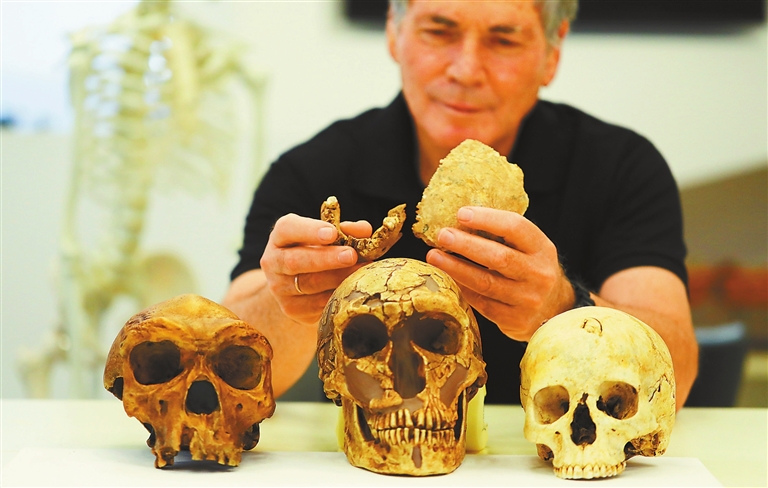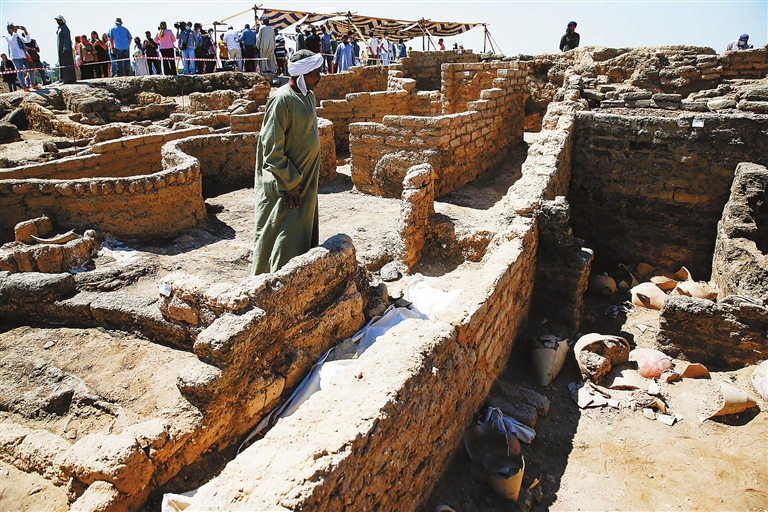

THE China Media Group (CMG) last week released a list of this year’s top 10 archaeological news stories and events from around the world. Here we take a look at the big archaeological discoveries and news stories. 1. New type of early human bones in Israel Bones belonging to a “new type of early human” previously unknown to science were found in Israel, shedding new light on human evolution, researchers said June 24. Excavations in the quarry of a cement plant near the central city of Ramla uncovered prehistoric remains that could not be matched to any known species from the Homo genus. The fossils date back between 140,000 and 120,000 years, and the team believes the Nesher Ramla type would have overlapped with Homo sapiens, the lineage of modern humans. 2. Best preserved site from the Paleolithic period: Piluo site Over 6,000 stone and earthen artifacts were discovered at the Piluo site in Daocheng County, Southwest China’s Sichuan Province, the National Cultural Heritage Administration said Sept. 27. Piluo is the largest known, best preserved archaeological site from the Paleolithic period, dating from roughly 2.5 million years ago to around 10,000 years ago, on the plateau. Highlights of the discoveries include Acheulean hand axes, which have been found mainly in prehistoric sites across Africa and the western coast of Eurasian continent. This type of relic is generally considered by scholars to represent the highest level of tool manufacturing at the time, according to Xinhua News Agency. 3. Oldest bone tools for clothesmaking in Morocco Archaeologists in Morocco identified clothesmaking tools fashioned from bone dating back 120,000 years, the oldest ever found, one of the researchers said Sept. 23. The findings had been “intentionally shaped for specific tasks that included leather and fur working,” the team wrote in a study published in the journal iScience. The discovery could help answer questions on the origins of modern human behavior, said El Hajraoui, a researcher at the National Institute of Archaeology and Cultural Heritage. 4. Child’s burial 78,000 years ago in Kenya Scientists found the oldest-known human burial in Kenya, dating about 78,000 years ago at a cave site called Panga ya Saidi near the Kenyan coast. They nicknamed the youngster “Mtoto,” meaning “child” in Swahili. The discovery, the researchers said May 5, sheds light on the development of early complex social behaviors in Homo sapiens. Homo sapiens first appeared in Africa more than 300,000 years ago, later spreading worldwide. 5. World’s oldest known cave painting in Indonesia Archaeologists discovered the world’s oldest known cave painting: a life-sized picture of a wild pig that was made at least 45,500 years ago in Indonesia on Jan. 13. The finding described in the journal Science Advances provides the earliest evidence of human settlement of the region. Measuring 136 by 54 centimeters, the Sulawesi warty pig was painted using dark red ochre pigment and has a short crest of upright hair, as well as a pair of horn-like facial warts characteristic of adult males of the species. 6. ‘Lost golden city’ from over 3,000 years ago in Egypt On April 8, archaeologists uncovered the remains of an ancient city in the desert outside Luxor that they said is the “largest” ever found in Egypt and dates back to a golden age of the pharaohs over 3,000 years ago. Famed Egyptologist Zahi Hawass announced the discovery of the “lost golden city,” saying the site was uncovered near Luxor, home of the legendary Valley of the Kings. Betsy Bryan, professor of Egyptian art and archaeology at Johns Hopkins University, said the find was the “second most important archaeological discovery since the tomb of Tutankhamun” nearly a century ago, according to the team’s statement. 7. World’s earliest coin workshop in Henan, China The world’s oldest coin minting workshop dating back about 2,500 years ago was uncovered in Central China’s Henan Province on Aug. 9. Archaeologists also uncovered several pits where large quantities of bronzeware casting waste were dumped, with two finished metal coins found in one of the pits. The coins are believed to be the currency in circulation back in the Spring and Autumn Period (770-476 B.C.) and the Warring States Period (475-221 B.C.), one of ancient China’s earliest metal coins, according to Gao Xiangping, the archaeological team leader of excavation at the Guanzhuang ruins. New discoveries at the workshop site not only provide a clear archaeological background for studies on the exact time of currency production but also help reflect the social and economic mechanism during the development of metal money. 8. Bronze age burial site of women in Spain Archaeologists excavating at La Almoloya, Spain, discovered a grave filled with precious items and the remains of a woman, who may have been a powerful member of society, according to the Art Newspaper on March 11. It sparked speculation that women may have been among the rulers of a highly stratified society that flourished on the Iberian peninsula until 1550 B.C. 9. Chinese relics in wrecks off Singapore Two centuries-old shipwrecks packed with ceramics and other artifacts were found off Singapore in a rare discovery June 16. Maritime archaeologist Michael Flecker, who supervised both excavations, described the first wreck as a “pretty remarkable” find, as it is from the Temasek period that spanned from 1300s to 1600s. Singapore appeared on maps during the Ming Dynasty (1368-1644) as Temasek, according to China Daily. 10. Protection of cultural relics in Afghanistan As many as 22 museum directors and distinguished scholars from around the world issued a proposal Nov. 23 for global cooperation to ensure the protection of cultural heritage in Afghanistan. It was initiated by Wang Xudong, director of the Palace Museum in Beijing. “As the situation in Afghanistan has recently undergone major changes, the country’s cultural heritage has once again drawn great attention among heritage experts across the world,” the proposal said. Afghanistan is home to two UNESCO World Cultural Heritage sites: the Cultural Landscape and Archaeological Remains of the Bamiyan Valley and the Minaret of Jam. (Xinhua) | 
